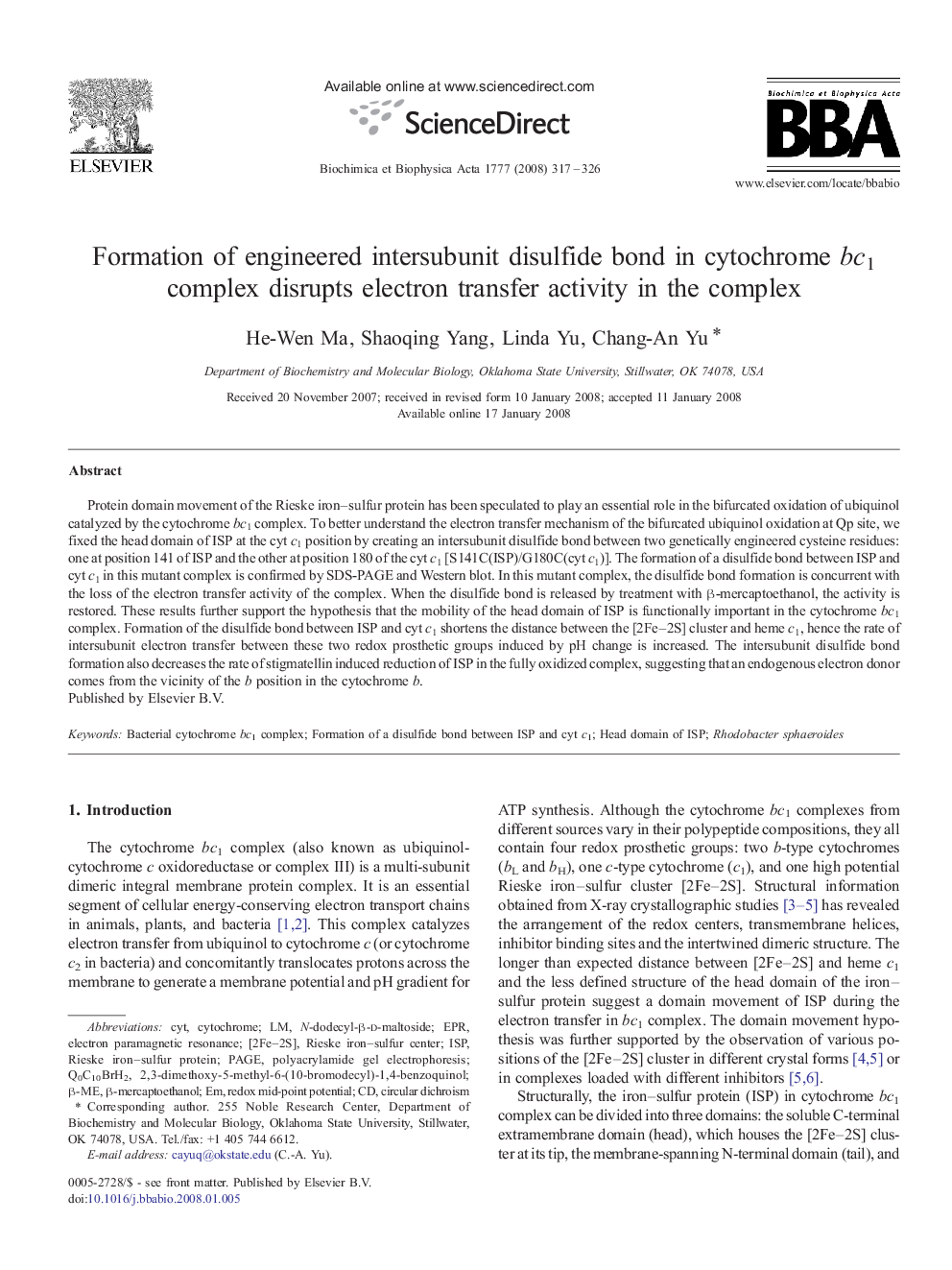| Article ID | Journal | Published Year | Pages | File Type |
|---|---|---|---|---|
| 1943280 | Biochimica et Biophysica Acta (BBA) - Bioenergetics | 2008 | 10 Pages |
Protein domain movement of the Rieske iron–sulfur protein has been speculated to play an essential role in the bifurcated oxidation of ubiquinol catalyzed by the cytochrome bc1 complex. To better understand the electron transfer mechanism of the bifurcated ubiquinol oxidation at Qp site, we fixed the head domain of ISP at the cyt c1 position by creating an intersubunit disulfide bond between two genetically engineered cysteine residues: one at position 141 of ISP and the other at position 180 of the cyt c1 [S141C(ISP)/G180C(cyt c1)]. The formation of a disulfide bond between ISP and cyt c1 in this mutant complex is confirmed by SDS-PAGE and Western blot. In this mutant complex, the disulfide bond formation is concurrent with the loss of the electron transfer activity of the complex. When the disulfide bond is released by treatment with β-mercaptoethanol, the activity is restored. These results further support the hypothesis that the mobility of the head domain of ISP is functionally important in the cytochrome bc1 complex. Formation of the disulfide bond between ISP and cyt c1 shortens the distance between the [2Fe–2S] cluster and heme c1, hence the rate of intersubunit electron transfer between these two redox prosthetic groups induced by pH change is increased. The intersubunit disulfide bond formation also decreases the rate of stigmatellin induced reduction of ISP in the fully oxidized complex, suggesting that an endogenous electron donor comes from the vicinity of the b position in the cytochrome b.
